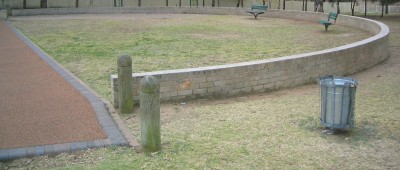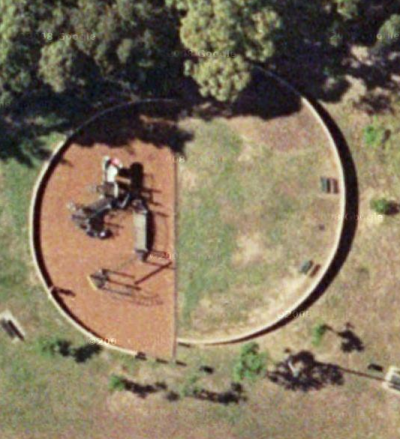Perimeter of curved shapes
Saturday, 08 August 2009 | 1 Comment
This week, Year 9 were looking at finding the perimeter of shapes that include curves (parts of a circle).
Along the way, I remembered I had this photo of a playground in my local area.

Click image for a larger version
Here it is in Google Maps (sorry, no link to the actual site):
From my notes when I took the photo, the radius of the circle is 11.75m.
How could you use this?
- I used it as a review the day after we had worked out how to calculate the perimeter of part of a circle. The scenario set was “how does the builder plan for the number of bricks required?”
- If I had remembered I had the image before we did the lesson, I would have used it as an introduction – “how are you going to solve this problem?”
Having only got a projector in my classroom this year, this is the sort of stuff I’ve been wanting to do since I started teaching.
Feel free to take this image and use in your own classroom. Obviously for a more senior/advanced class you could calculate other things like the length of an arc formed by the two seats.
Posted in • Lesson Idea • Circles • Media • Photo • Technology • Projector Resource • What can you do with this? | Short URL: http://mths.co/1602
Post a comment
Commenting is not available in this channel entry.New Subscribe to the …
MathsLinksemail newsletter
Get updates…
About
Simon Job — eleventh year of teaching maths in a public high school in Western Sydney, Australia.
MathsClass is about teaching and learning in a maths classroom. more→
Archive
Elsewhere
 @simonjob
@simonjob
updates via  @mathslinks
@mathslinks
Recently read/found.
Being a Vector is not Mutually Exclusive – Ringo Mok
maths vectorsInstagram
Gcf howie_hua maths

Comments